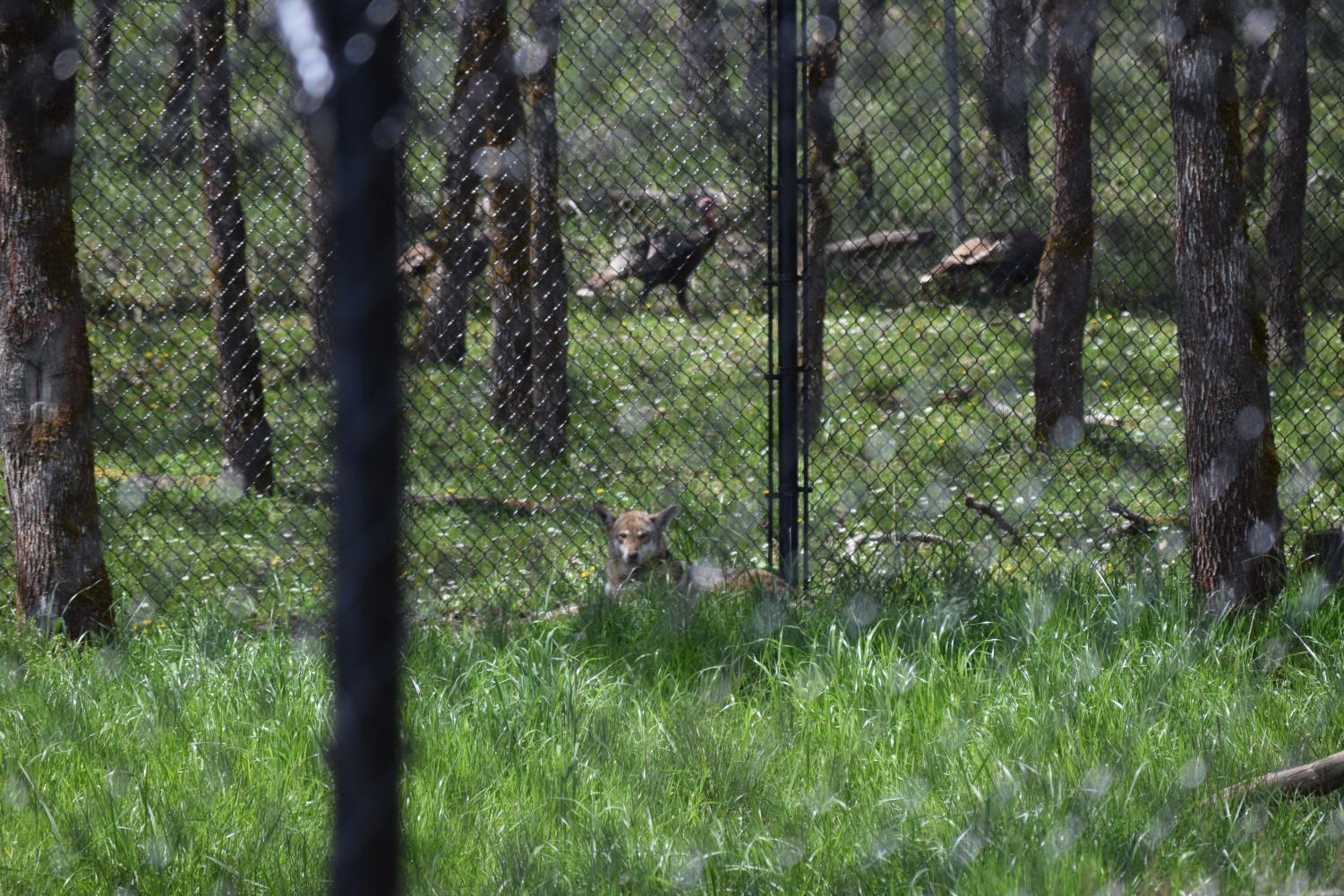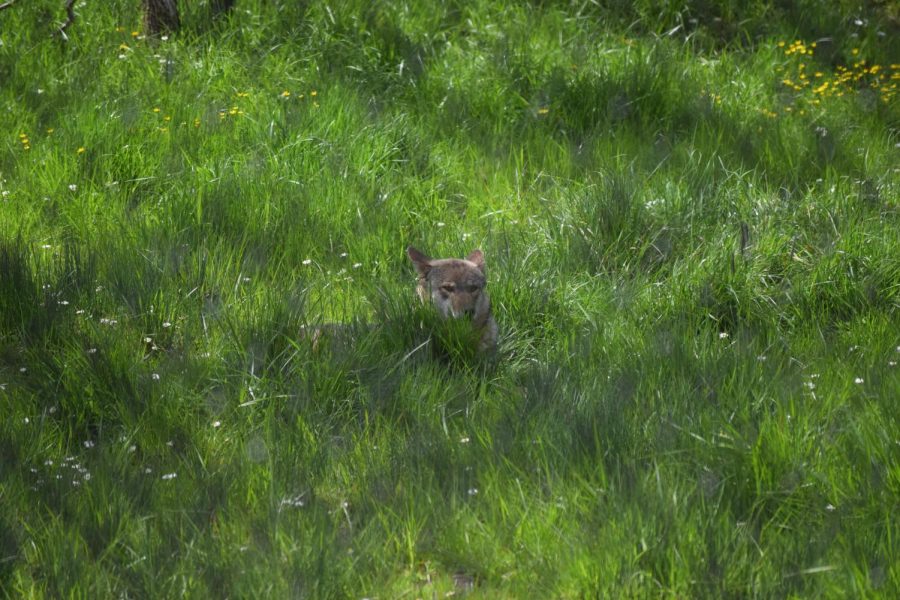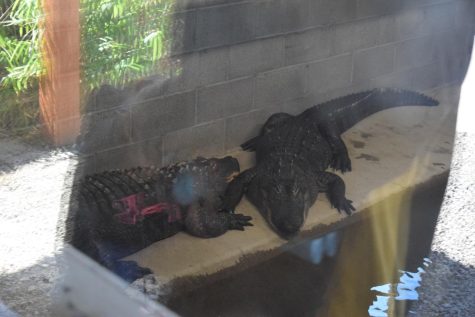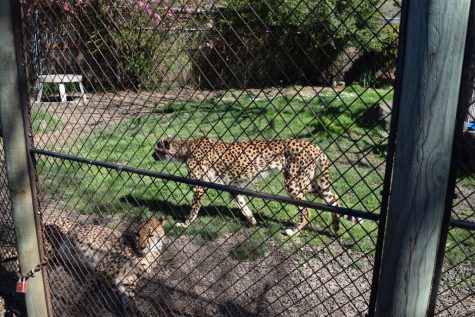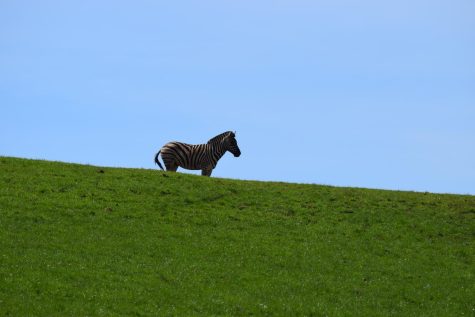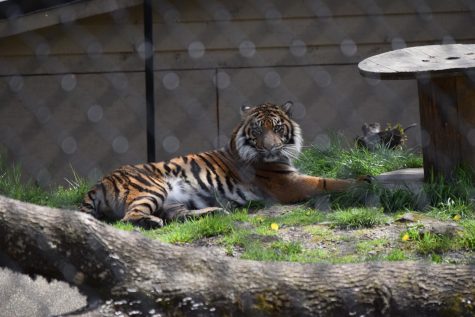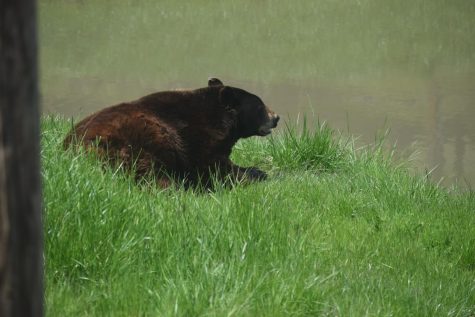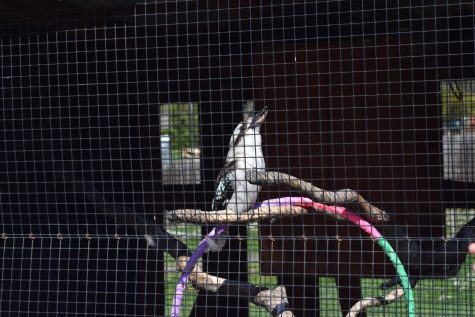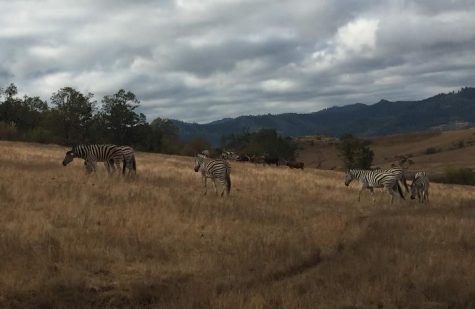Meet the Red Wolves
A red wolf hides in the tall grass of its enclosure. The red wolves are new to the Wildlife Safari’s Americas section of the drive-thru and they like to hide in the far corners of their enclosure. Winston, Oregon.
June 2, 2023
A red wolf is a type of wolf that is closely related to grey wolves and eastern timber wolves. There are currently four red wolves at the Wildlife Safari, and their names are Hawthorn, Cypress, Magnolia, and Myrtle.
All four are approximately four years old and have been at the Safari for just over a year now. The average lifespan of a red wolf in the wild is 7-9 years, and 15 in captivity.
Red Wolves are pure carnivores. Their diet at the Safari is a bit different from their diet in the wild. In the wild they normally eat small animals such as rabbits and ground squirrels. At the Safari they are given red meat regularly, but they are sometimes given rabbit as a treat.
Red Wolves are incredible animals. They have pointed ears with a very dog-like appearance. Their fur is a red-tin color with darker colors around the tips of their ears and tail and down their back. Males are slightly bigger than females. With a similar appearance to coyotes, people may often mistake them for the non-endangered relative of the wolf and shoot at them in an attempt to scare them away from their property.
Red Wolves are typically located in North America. Currently, they are only located in North Carolina in wooded or forest areas. Red wolves are at high risk of becoming extinct due to human conflict. Poaching and black-market trading are just two of the main causes of the red wolves becoming critically endangered with just 15 confirmed still out in the wild.
While they are part of the Safari, they receive no training because the caretakers wish for them to be scared of humans so the wolves will stay away from them. They do receive enrichment which includes hiding and burying their food as they would in the wild.
You can see these majestic animals in the Wildlife Safari drive-thru. They are located past the bear area in the Americas section. They are located on the left side of the road. They may be hard to spot and like to hang out in the furthest corners of their enclosure.
